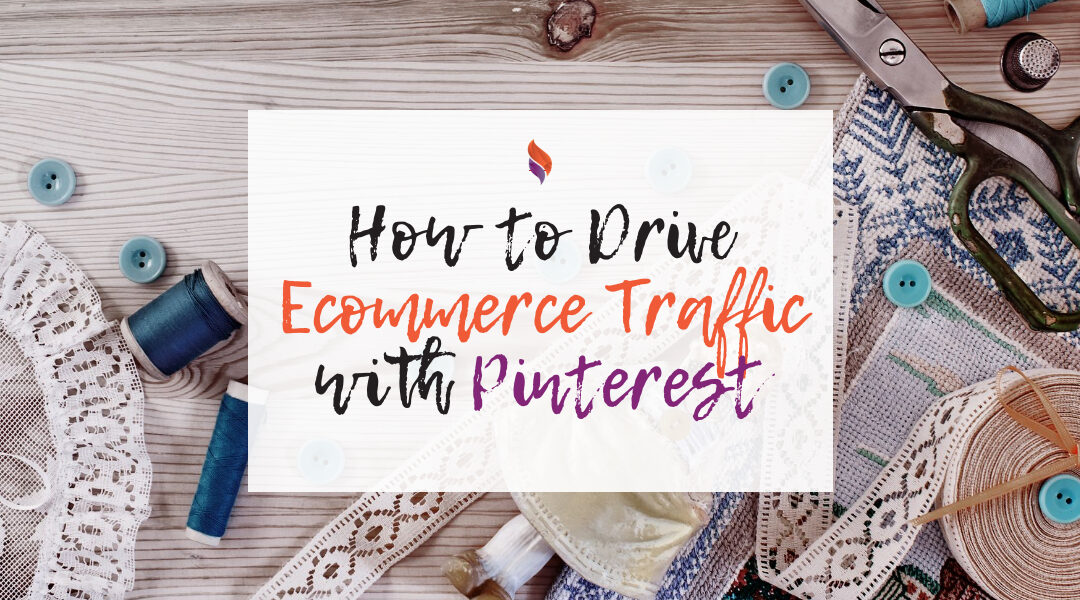Pinterest Can Drive Traffic
If you’re marketing an e-commerce business, visuals are also important to you and, according to Kissmetrics, that could be a match made in heaven:
“If you still think Facebook and Twitter are the be-all and end-all of social media marketing tools, think again. Say “Hi” to your business’s new best friend – Pinterest. Pinterest pins are 100 times more spreadable than a tweet, with the retweet average hitting only 1.4%. And, as for Facebook, the half-life of a pin is 1,6000x longer than a Facebook post…Since the recent Instagram purchase by Facebook, Pinterest has become the hot ticket item for business marketing.”
Still not convinced? Then, consider these metrics from Hubspot:
- Pinterest now boasts more than 100 million active users, 71% of whom are women, and 45% of whom use Pinterest while watching TV
- 31% of all adult internet users are on Pinterest
- Pinterest drives more site traffic than Twitter, LinkedIn, Google+, and YouTube
- Pinterest users on average spend 50% more that users of other social channels
- Pinterest users spend 20% more than users referred from search
Ecommerce Success with Pinterest Means Knowing the Rules
So, businesses—including e-commerce businesses—are increasing sales with Pinterest, but some are doing better than others. Those who are succeeding take the time to understand how Pinterest works, and how to use the social media giant’s massive audience to increase site traffic. Said differently, to effectively leverage Pinterest, e-commerce businesses need to know the rules of the road, including the following :
1 – Create your business account:
Step 1 is setting up your business account, which is relatively simple and straightforward. You complete a form with basic information about your business, verify your website (this shows prospective buyers you can be trusted), and agree to Pinterest’s terms of service.
2 – Choose your profile image:
Remember, Pinterest is all about images, so you’ll want to pick a strong profile image that grabs attention—it could be your logo, for example. You should scale your profile image to 160×160 pixels. You should also add a brief (and engaging) description of your business to introduce yourself to Pinterest users.
3 – Create your boards:
Pinterest presents your images in “boards.” Since your goal is to drive Pinterest traffic to your website, you’ll have more success if you first carefully research what your audience is interested in and organize your Pinterest boards in ways that match those interests. Give each board a clear (and easy-to-understand) name in 20 characters or less. Add an attention-grabbing description for each board, and a strong cover pin that helps users understand what’s on each board.
4 – Invest in (very) strong images:
Remember, Pinterest is a visual social media site. People want to be inspired, and that isn’t going to happen if you pin low-quality images. If you want to succeed, invest in strong product photography, and pin only your very best images at (at a minimum of 600 pixels).
5 – Don’t limit yourself to product images:
In addition to being visual, Pinterest is inspirational. Users care about more than your products—they also want to know what inspires you, how you define your brand, and what values drive your business. Use Pinterest to pull people into your business, and don’t be shy about showing them the people who make it work.
6 – Use “pin it” buttons on your website:
On each of your site’s product pages, add a widget that visitors can use to pin your content to their boards. This drives exposure of your brand on Pinterest and magnifies interest. To add your widgets, go to the Pinterest Widget Builder page. Choose the kind of button you want to use (there are 5: pin it buttons, follow buttons, pin widgets, profile widgets and board widgets). Click “build it” to create your widget code, and then copy that code for your website.
7 – Put Pinterest boards on your website:
If you use the board widget, you can embed entire boards onto your website. This creates a more integrated strategy, informs visitors to your site about your Pinterest presence, and encourages social sharing.
Take advantage of rich “product pins:” product pins, also called “rich pins,” are relatively new to Pinterest. These enable you to add ecommerce details—like pricing and availability—to your pins. Product pins (according to research from Pinterest) achieve better click-through rates and increase brand visibility.
Leverage Pinterest analytics: measuring results is critical to every aspect of your marketing strategy, and Pinterest is no exception. Fortunately, Pinterest offers Pinterest Analytics, which will tell you which pins are driving the most website traffic, and which pins are the most popular. You’ll also see which other boards your pins appear on, and what people are saying about them—all business intelligence you can use to enhance your presence on Pinterest.
Conclusion
So, those are the basic rules to drive site traffic with Pinterest. Of course, Pinterest is just one component of your social media marketing strategy, and social media represents just one piece of a comprehensive digital strategy. Creating such a strategy can seem daunting—but there are experienced, successful agencies which can help.
To learn more about the ways our SEO, social media, web design, web audit and PPC services can help you boost sales and grow your business, contact us today.

Cassandra is the Content & Social Media Strategist at ThinkFlame. There is no challenge too big or too small. She enjoys creating, integrating and managing online communities and working with clients to building up their social footprint.

